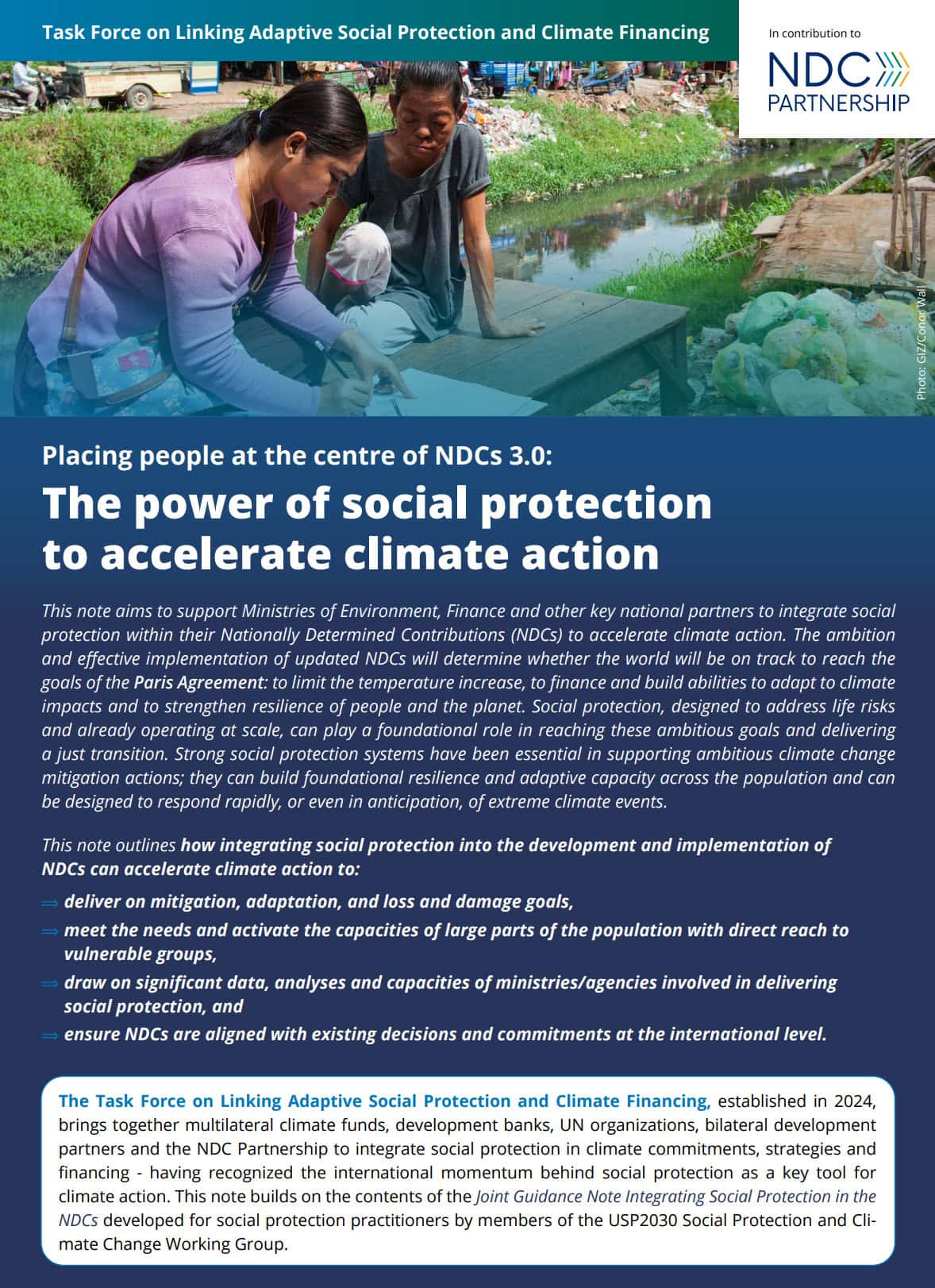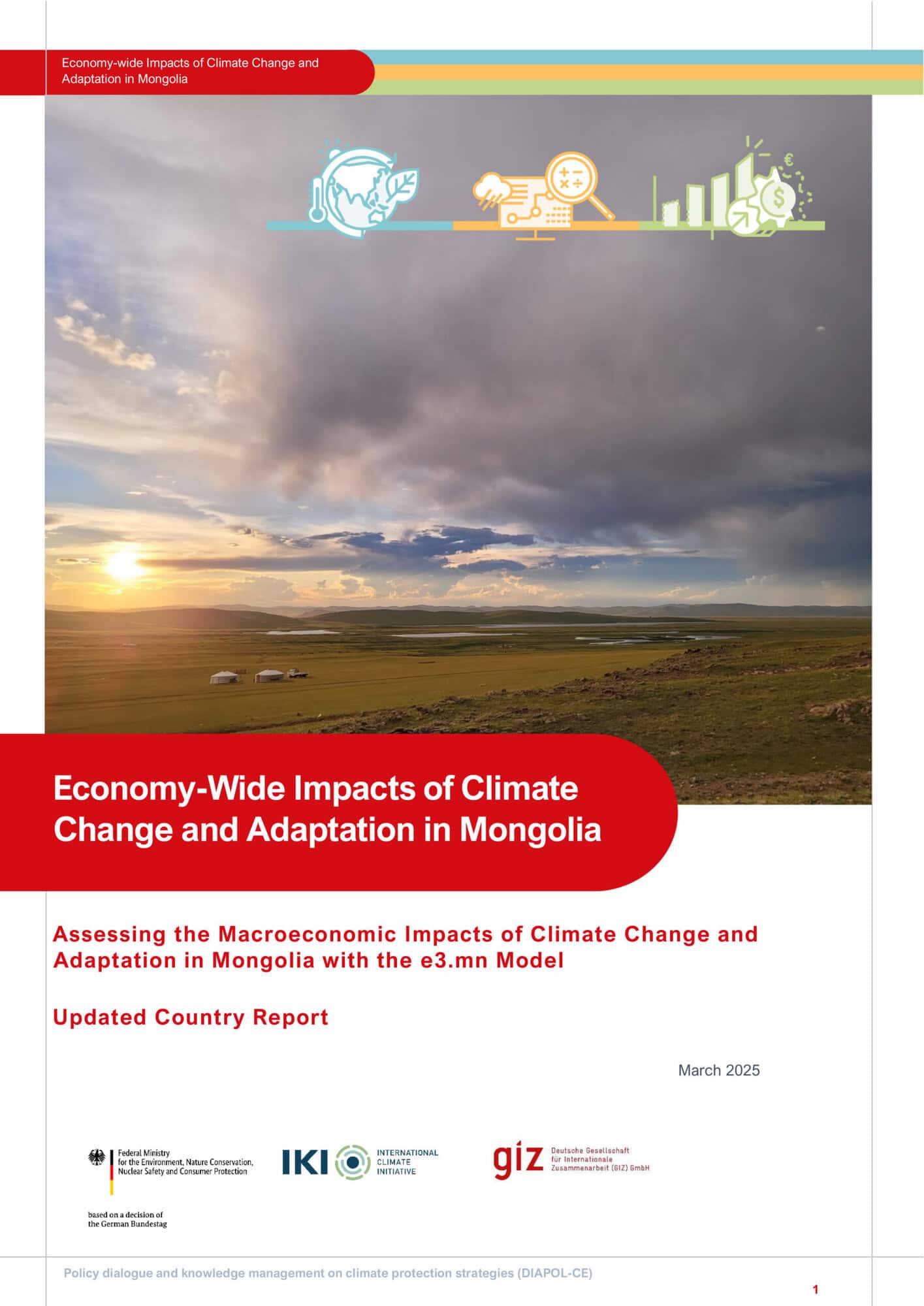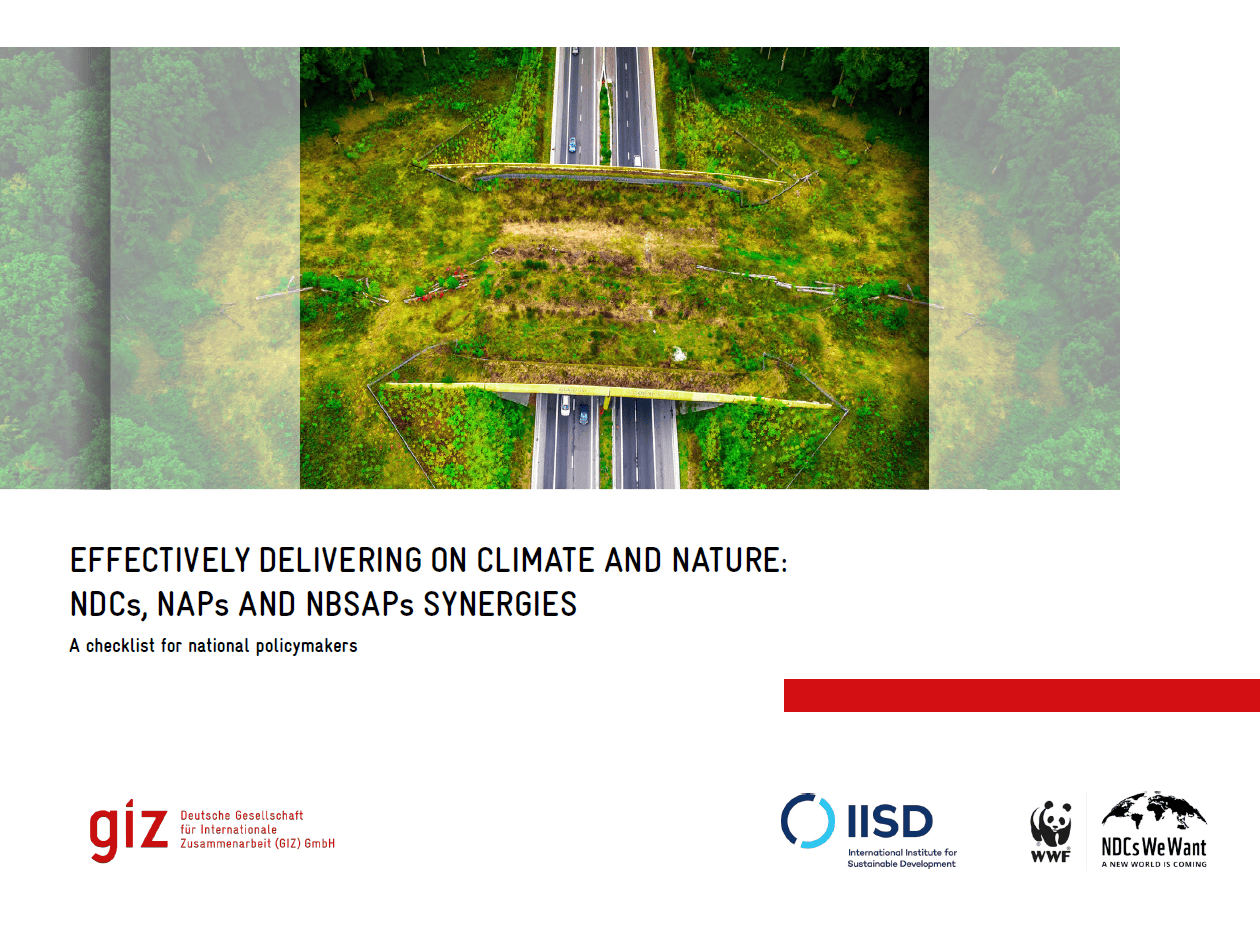Aligning NAP and NDC for coherent Climate Adaptation Action
Aligning NAP and NDC for coherent Climate Adaptation Action
The National Adaptation Plan (NAP) process is a country-driven process where national governments analyze current and future climate risks and deliberate with stakeholders how the risks can be addressed. The process provides a basis for countries to identify and prioritize medium-and long-term adaptation options and to implement them through respective strategies. Established in 2010 by the United Nations Framework Convention on Climate Change (UNFCCC) as part of the Cancún Adaptation Framework, the NAP process complements the existing short-term national adaptation programmes of action (NAPAs) by providing a systematic approach to plan for adaptation at the national level. The NAP process can include the formulation of a document (the NAP document), but as a process it also includes stakeholder engagement, ongoing policy coordination and capacity building. The NAP process is mentioned in the Paris Agreement as a means for all countries, while its initial Technical Guidelines from 2012 were designed especially for least developed countries (LDCs).
The term ‘national adaptation planning’ is often used synonymously to the term ‘NAP process’.
A general overview of NAPs is provided by this FAQ section of the NAP Global Network. The current status of the formulation and implementation of NAPs is presented in a UNFCCC report from 2021.
For further information on the NAP process, refer to the UNFCCCs NAP portal and the support platform NAP Central.
The NAP process is meant to reduce vulnerability, build adaptive capacity and mainstream adaptation to climate change into general and sector-specific development planning processes, including tracking of progress. It can be used to coordinate adaptation planning and actions across ministries and other government and non-government stakeholders and to facilitate implementation of adaptation actions towards climate resilient development.
In 2012, the UNFCCC Least Developed Countries Expert Group (LEG) published the NAP Technical Guidelines, outlining the key steps involved in the process. A range of supplementary materials offer a more in-depth coverage of specific steps of the NAP process.
Within its NAP support, GIZ is closely collaborating with different actors, such as NAP Global Network (NAP GN) and the NAP Global Support Programme (NAP-GSP). Both support developing countries, and in the case of NAP GSP especially LDCs to advance their NAP processes.
In this context, important tools for the NAP process are:
Parties to the UNFCCC agreed to submit intended nationally determined contributions (INDCs) in the run-up to the 21st Conference of the Parties (COP21) in Paris. Those INDCs outlined Parties’ intended contributions towards reducing greenhouse gas emissions. Several countries also included adaptation in their contributions.
Unless countries chose to amend their INDCs prior to ratifying the Paris Agreement, these documents became their first nationally determined contributions (NDCs).
New or updated NDCs shall be submitted every five years (2020, 2025, 2030, etc.) to the UNFCCC secretariat (available here), each time setting more ambitious targets for climate action than the previous time.
According to Climate Watch, 179 countries have submitted a new or updated NDC. (December 2024) 151 NDCs of all the INDCs and NDC updates submitted so far include adaptation. (December 2024)
According to Article 7.9 of the Paris Agreement, all Parties shall, as appropriate, engage in adaptation planning processes.
Further, they should periodically report an adaptation communication to the UNFCCC secretariat, as part of or alongside other documents, such as a NAP, NDC and/or national communication. In countries where adaptation is included in the NDC, it should be aligned with the NAP process to avoid duplication and ensure coherent implementation. Whereas the NDC is a country’s pledge and may outline adaptation goals (the ‘what’), the NAP process is a domestic planning process that can set out ‘how’ NDC adaptation goals can be implemented.
The following graphic illustrates how NAPs and NDCs are interlinked.
The NAP Process is an iterative approach consisting of four elements (see technical guidelines by the Least Developed Country Expert Group (LEG). It can be tailored to specific national circumstances and can support the implementation and future iterations of NDC adaptation goals. For example, the groundwork for the NAP process (Element A) and the preparatory elements (Element B) could take the NDC goals and priorities as a starting point or help inform them for successive NDC updates. Moreover, identified adaptation-mitigation co-benefits and synergies could be a means of supporting a more strategic and effective approach to accessing and mobilizing climate finance for the implementation of the NDC and the NAP process. These linkages are also explored in a GIZ study on ‘The Role of the NAP Process in Translating NDC Adaptation Goals into Action’.
Aligning the NAP process with the NDC can accelerate enhanced adaptation action:
The alignment of these two policy processes thus has important implications for national climate change policy governance and coordination. It enables streamlining of a country’s transparency framework and can support the preparation of adaptation-related reporting to the UNFCCC. The global stocktake of the Paris Agreement (GST) will also allow for greater synergy between the two processes. The aim of the GST is to assess the world’s collective progress towards achieving the agreement’s purpose and long-term goals. This assessment also refers to the effort in the adaptation sector and will provide a better understanding of the state of adaptation polices, thus strengthening the inclusion of NAPs in NDCs.
Beyond that, a better alignment can also promote general coherence with the Sustainable Development Goals and other agendas, such as the Sendai Framework for Disaster Risk Reduction and the Convention on Biological Diversity. However, for truly ambitious climate action, it remains crucial to take a holistic approach, explicitly acknowledging the interlinkages between adaptation and mitigation, which are supported by the alignment of NDC and NAP processes and the consideration of further agendas.
For information on the inclusion of adaptation in NDCs, see here.
More information on the NAP process is also available under Mainstreaming adaptation, at NAP Global Network and at the International Institute for Sustainable Development (IISD). Further information on NDCs can be found at the NDC Partnership.
This alignment brief provides a useful overview of NDC and NAP alignment.



You need to load content from reCAPTCHA to submit the form. Please note that doing so will share data with third-party providers.
More InformationYou need to load content from reCAPTCHA to submit the form. Please note that doing so will share data with third-party providers.
More InformationYou are currently viewing a placeholder content from Google Maps. To access the actual content, click the button below. Please note that doing so will share data with third-party providers.
More InformationYou are currently viewing a placeholder content from Google Maps. To access the actual content, click the button below. Please note that doing so will share data with third-party providers.
More InformationYou are currently viewing a placeholder content from Mapbox. To access the actual content, click the button below. Please note that doing so will share data with third-party providers.
More InformationYou are currently viewing a placeholder content from OpenStreetMap. To access the actual content, click the button below. Please note that doing so will share data with third-party providers.
More Information